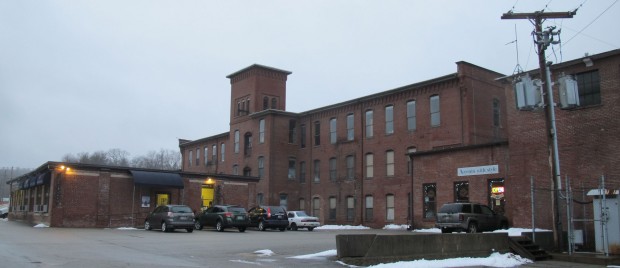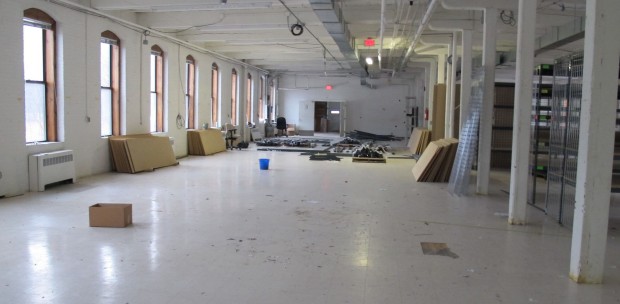Developer Sees Affordable Housing Opportunity In Old Mill

Amanda Loder / StateImpact New Hampshire
The Pine Valley Mill in Milford is one of several affordable housing projects to benefit from federal community block grants
Recently, a handful of towns, including Milford, split $3.1 million in community development block grants to help create more affordable housing. According to statewide estimates, only one-in-six two bedroom apartments is affordable to a median income renter. But the Granite State has something of a homegrown advantage in tackling this problem.
Right now, the Pine Valley Mill in Milford is less than impressive. Like many old New England mills, this one looks a bit…ramshackle at the moment. But developer Roberto Arista sees a lot of potential in this dingy space. As we enter the mill, he points out some changes.
“So this is one of the stairwells,” Arista says. “And really, it’s not going to be the front door, the front door’s going to be on the other side.”

Amanda Loder/StateImpact New Hampshire
Developer Roberto Arista and his company, Dakota Partners, are set to renovate the Pine Valley Mill.
Arista is a developer with Massachusetts-based Dakota Partners. The company specializes in affordable housing. And right now, its big project is the Pine Valley Mill. The building’s core dates back to the mid-1800s, but there are a number of later additions. A handful of commercial tenants are renting some of the space. But it’s mostly just a vacant collection of red brick boxes, draped in cobwebs. Looks aside, as we continue our tour of the mill, Arista says he’s optimistic about the project.
“This building has been maintained perfectly. So it has absolutely no structural issues. Not everything is perfectly straight. But it’s been around for 200 years,” he says.
When it’s finished, Pine Valley will be a mixed-use building. The hair salon, karate studio, power plant and dog spa will get to stay where they are. But Arista’s company will overhaul the outside aesthetic of the site, and gut the unoccupied space, turning it into 50 affordable housing units. Although they’ll look more like industrial-chic lofts, they’ll rent for below market rate. Arista expects most tenants will be young professionals. Milford Community Development Director Bill Parker says that’s exactly what his town needs.“The past couple of years, I think, the vacancy rates have been very low. So it has been hard for people to find decent, suitable housing,” Parker says. “And we’re finding that multi-family housing or town homes or anything that’s more affordable is what’s really in demand right now.”
But affordable housing doesn’t come cheaply. Arista says the price tag on this project is $14 million.
About half of that cost will be cut thanks to various federal incentives.

Amanda Loder / StateImpact New Hampshire
Milford Community Development Director Bill Parker says his town needs more affordable rental options
For example, Dakota Partners was awarded a tax credit by the state’s Housing Authority. And $388,800 federal block grant awarded to Milford will help with site improvements, like making the parking lot easier to access from the road. Arista admits it’s usually cheaper to build fresh, rather than rehab. Especially since old buildings can hide expensive surprises. But, he says, “Fundamentally, we just believe in reusing what’s there.”
This idea is called “adaptive reuse.” It means taking an old, unused building and using it for an alternative purpose. This has been going on for a long time. Manchester’s Millyard is a prime example. But over the past ten years, this model is making more and more sense to developers.
“The market is changing, both in terms of where people want to live, and also what sorts of structures they want to live in.” says Ben Frost with the New Hampshire Housing Finance Authority.
He says the advantage of mills is that they’re often in built-up areas—a big draw for potential residents. But more than that, is the affordability aspect.
“We have seen, over the past decade or so, an increasing proportion of people’s wages being devoted to their housing costs as housing costs have risen faster than their incomes,” Frost says. “It was partly corrected by the recession, but only partly corrected. We still are left with a significant problem, statewide, of housing affordability.”
Developer Roberto Arista is already seeing some of that demand for the Milford mill project.
“The town is getting all kinds of calls about that because they want to know when they can start, you know, renting. And so we’re trying to build up a little bit of a waiting list,” he says.
Arista expects construction on the Pine Valley mill project to begin in March. And if all goes well, tenants should be able to move in by the beginning of 2014.





